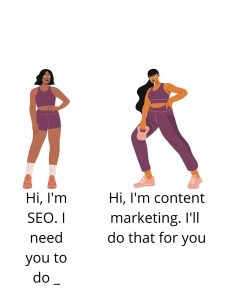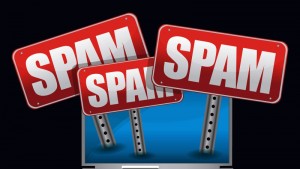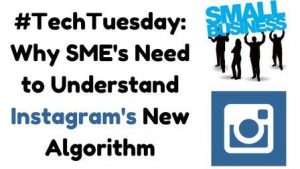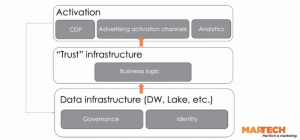— March 2, 2019
Are you one of the many entrepreneurs who’ve been selling other people’s products for a while and gotten tired of it? Dropshipping is great, but it has its limits. If you really want to reach a new level of profitability and take ownership of your own brand, you’ll need to get into private-label manufacturing.
Private-labeling is simply taking a generic product and turning it into your own with custom branding. It’s a great way to gain the benefits of your own product line without the worry of creating your own product from the ground up.
Doing business with a manufacturer is a nerve-wracking process if you haven’t done it before. Especially if you’re doing business overseas, you may have never met the people you’re going to be doing business with. You might have no idea whether or not they can actually do the job they say they can. And there are pitfalls you might be dealing with that you’d never expect.
With the right mindset and the right information, though, it’s possible to find a capable and reasonable private-label manufacturer. You can get a manufacturer that’s right for you and be confident that they’re going to do the best job possible.
I’ve been in the business of sourcing products for years now.
In my junior year of high school, I spent a year in China and became fascinated with how supply chains work. I built relationships with the local shopkeepers who sold overruns from local manufacturers, slowly built up an understanding of where their products came from, and when I graduated it was an easy step to get into product sourcing.
In this post, I will share my experience with you and outline how to find private-label manufacturers for your products.
Sourcing Manufacturers Locally or Abroad
Should you stay local or go overseas? It depends.
There are a few different factors you need to consider:
Verification of Identity
If you’re really worried about doing business with someone in a foreign country (especially China, where you can get cheated by scammers easier than in America), it’s worth sticking closer to home.
Order Size
If you stay Stateside, you can usually order a smaller amount of product than if dealing with an overseas manufacturer. China in particular tends to require big manufacturing runs. On the flip side, if you want a ton of product, China’s probably a better option because large manufacturing runs will be cheaper.
Lead Time
No matter how efficient your overseas contact is, if you stick closer to home for your product manufacturing you’re going to get it quicker. That’s just how distance works. If your lead time is important you might be better served staying local.
Be aware of banned materials and tariffs that may apply if you go overseas, as those can be unexpected land mines that pop up for the unprepared.
Do your homework. Being aware of possible quality control issues will help you down the line, and even if you have good reverse logistics, you’re best served minimizing returns in the first place.
Where to Start
There are a couple of different options for where you can start your search.
Pre-Screened Platforms
My company, Sourcify, and others like it specialize in connecting people with trustworthy overseas manufacturers, particularly in China and Vietnam. There are also some lists of trustworthy manufacturers floating around, though they tend to focus more on American and European companies.
Open Marketplaces
Alibaba is one of the most commonly used open marketplaces, but it can be hard to tell who’s a reputable seller, and who’s a reseller or scammer. When you’re looking at products to source from one of these platforms, look for a few keywords: white labeling, custom accepted, branding, customizable or OEM.
If you choose to go your own way and try to source a manufacturer yourself, you’ll need to be careful of scammers and middlemen. If you’re dealing with China, ask for a business license so you can check what they’re in business for. Free email services can be a red flag for scammers, too—look for a registered domain name. A lot of businesses wind up working with a trading company instead of a factory, and may never know the difference.
It’s possible that you’re dealing with a trading company if you see a wide array of different products from different source materials offered; it indicates that they’re coming from multiple factories. That’s not necessarily a bad thing, but if you want to keep your margins high you’ll need to deal directly with a factory.
You’ll want to find out a few things about the manufacturers you talk to, too.
- Do they specialize in the product you’re getting? That can help with quality and cost.
- What sort of quality are they known for?
- What’s their track record with defects? Google and eCommerce forums can help you find the answers to important questions like these.
Do your research up front.
Open the Lines of Communication
At this point, you should be in communication with several manufacturers, and you’re ready to start getting quotes. Try to get at least five quotes from different sources so you can compare them.
When you’re dealing with your manufacturer, be as clear as you possibly can. Concise, to-the-point emails are important—doubly so if you’re doing business overseas. Ask them for references and see if they’ll sign an NDA.
You’ll need to be watching for a few different things in the quotes you get back:
- Cost
- Payment terms
- Turnaround time
- Minimum order quantity
As you look at your quotes, you’ll need to keep an eye out for the details. Go through each quote side by side with a fine-toothed comb—a spreadsheet is great for comparisons.
One key item to keep an eye on is “Free On Board,” or FOB. This indicates where you’re expected to take delivery of the product. Costs before the location noted are taken care of by the seller (the factory) and costs afterwards are taken care of by the buyer (you).
If the FOB is overseas, you’re in for a lot more work. Either way, you’ll have to work with a fulfillment company to make sure that your product makes it to you.
Don’t take the first quote as being set in stone, either.
You can negotiate—if they’re close, see if they’ll move on your pain points. If your payment terms are unfavorable, try seeing if they’ll give you better. If your costs are too high, see if they can adjust.
Getting Off the Ground
You should get some sample products back so you can check to make sure they’re made to your specifications and of high enough quality. Check to make sure everything’s correct.
Once everything’s sorted out to your satisfaction, it’s time to cut a purchase order, pay for your product and get your transportation and logistics in place. At this point, you’re ready to start selling your private-label product.
Finding a private-label manufacturer is a hard job, and something that many people trip up on. With this guide, you’ll be well equipped to make the right decisions and avoid the pitfalls that come with creating a new product.
Business & Finance Articles on Business 2 Community
(31)








